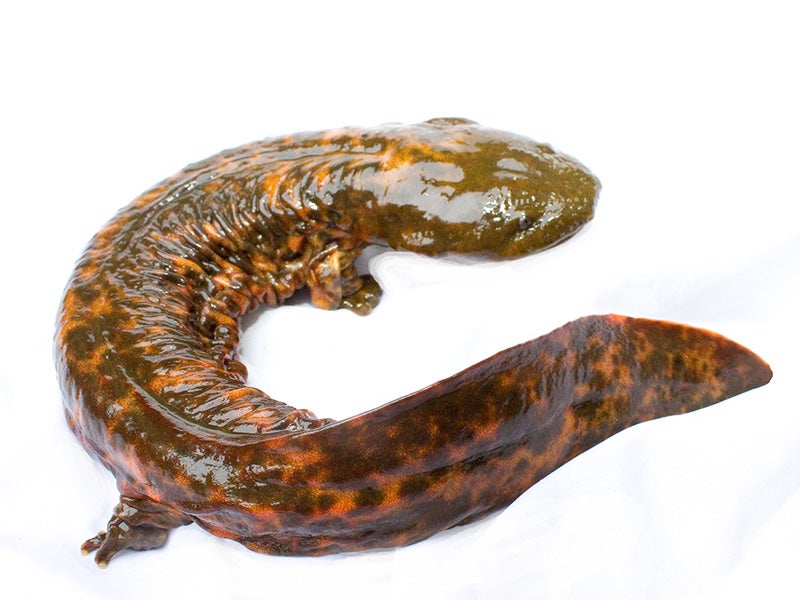Saving the Eastern Hellbender
Hellbenders are in drastic decline across the eastern United States, including the state of New York. Recent surveys in the Susquehanna drainage have discovered only a few remaining hellbenders.
Case Overview
A coalition of New York scientists, citizens and environmental groups have filed a petition asking the New York Department of Environmental Conservation to award state endangered species protection to the eastern hellbender, a type of salamander that can grow up to 2 feet long. Hellbenders have traditionally lived in the Allegheny and Susquehanna river drainages of southeast and central New York, but their populations have dropped by nearly half in the past few decades in the Allegheny drainage, and they are nearly extinct in the Susquehanna drainage.
The largest species of salamander in North America, hellbenders are known by many colorful names, including “big water lizard,” “devil dog” and “snot otter,” the latter because of their propensity to secrete a mucus-like substance when threatened. These fully aquatic salamanders live in fast-flowing rivers and streams, where they prefer to lurk under rocks and wait for passing prey. Their habitat, however, has been under assault for years from pollution and development. Salamander eggs, laid in the water, are especially vulnerable to chemical pollutants and sedimentation. Adult salamanders are also susceptible to pollution because of their permeable skin.
Because of these threats, hellbenders are in drastic decline across the eastern United States, including the state of New York. The average hellbender population in the Allegheny drainage had dropped by about 40 percent since the 1980s, according to Dr. Amy McMillan, a biology professor at SUNY Buffalo State, and researcher Robin Foster; recent surveys in the Susquehanna drainage have discovered only a few remaining hellbenders.

Case Updates
Case page created on November 24, 2014.

